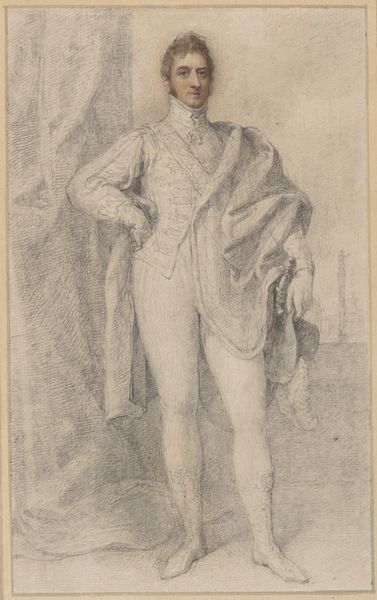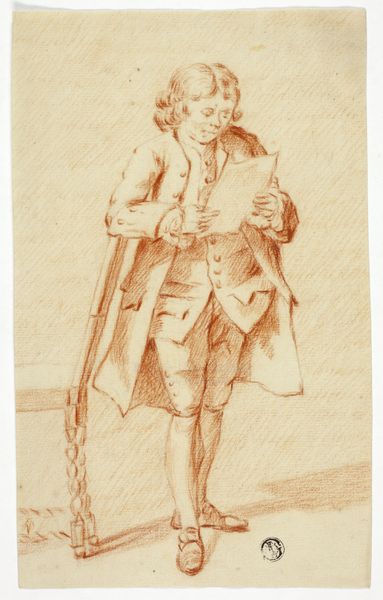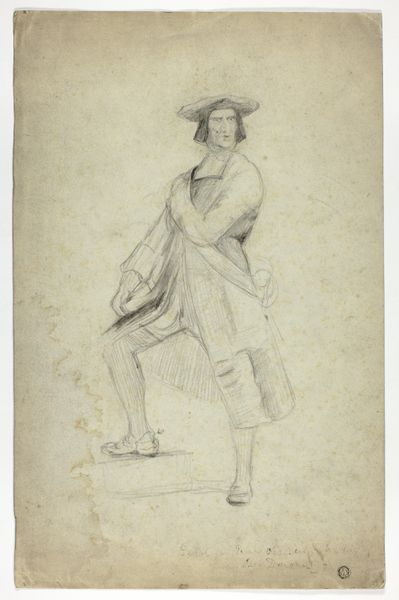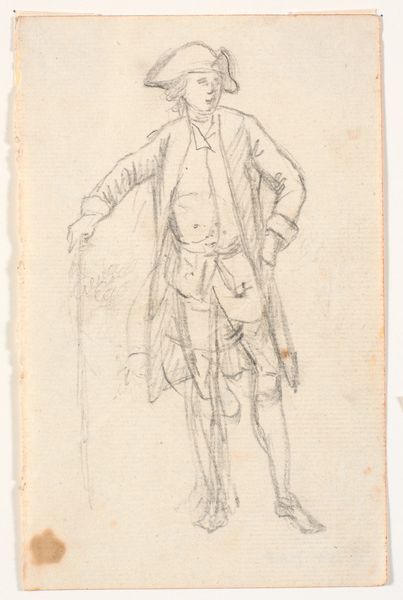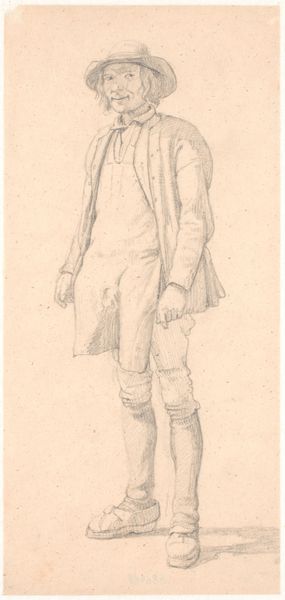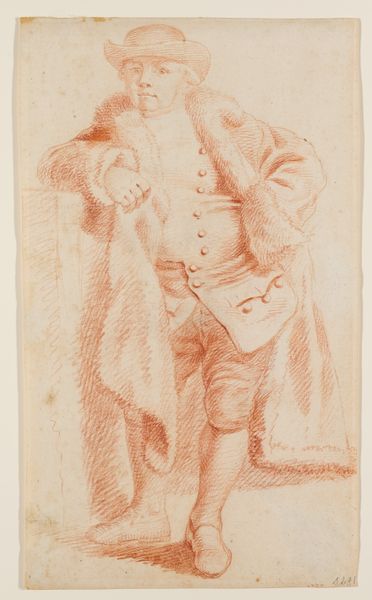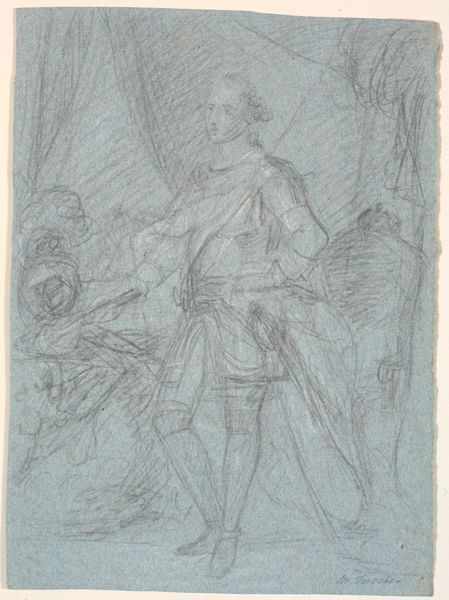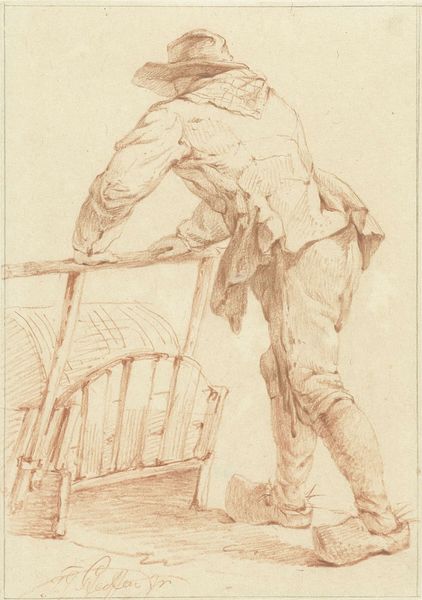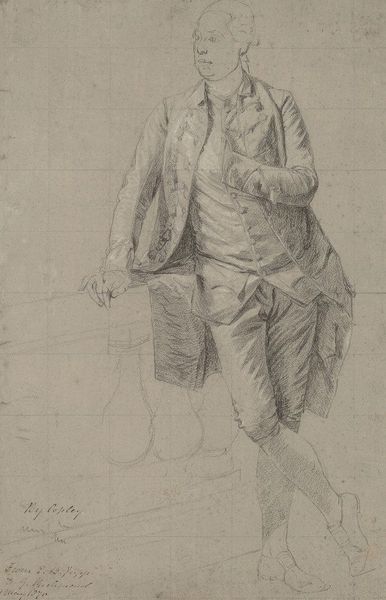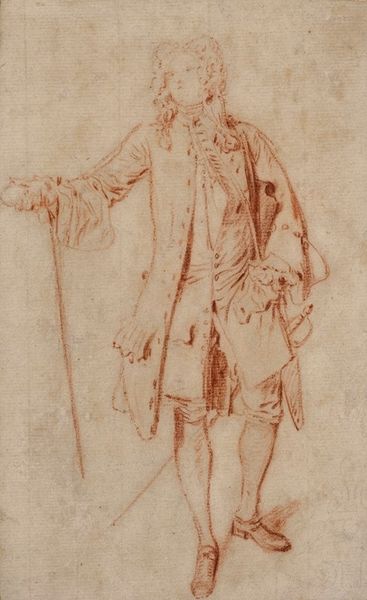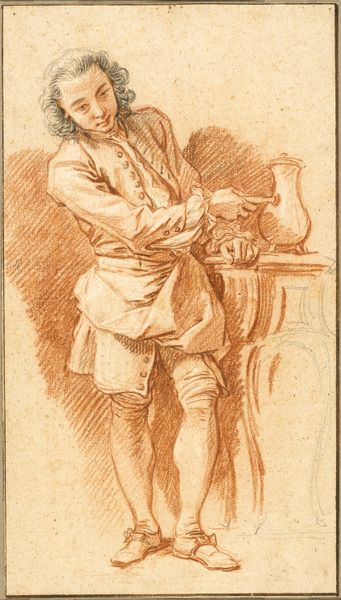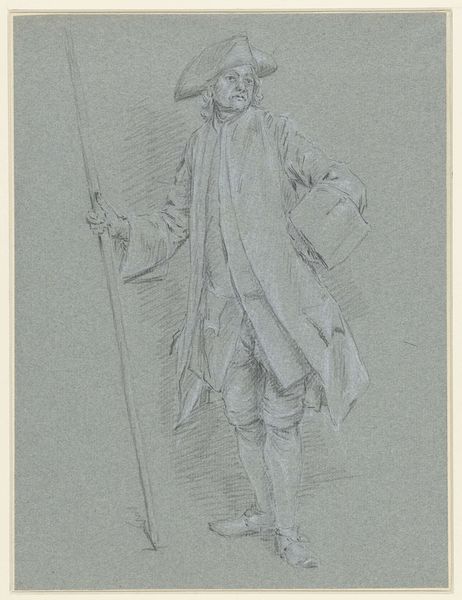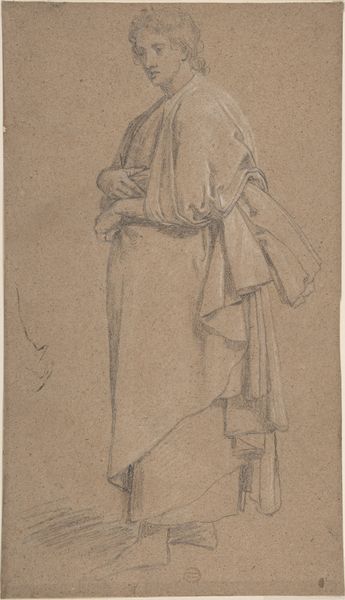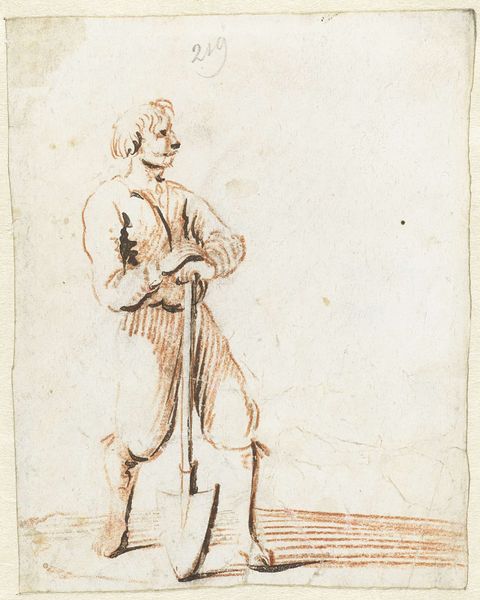
Studie til et portræt af en stående mand med et papir i hånden 1768 - 1769
0:00
0:00
drawing, pencil, charcoal
#
portrait
#
pencil drawn
#
drawing
#
neoclacissism
#
charcoal drawing
#
pencil drawing
#
pencil
#
portrait drawing
#
charcoal
#
academic-art
Dimensions: 331 mm (height) x 207 mm (width) (bladmaal)
Editor: Here we have Jens Juel's "Study for a Portrait of a Standing Man with a Paper in his Hand," created between 1768 and 1769. The pencil and charcoal on paper give it a very immediate, almost fleeting quality, despite the man's formal attire. What do you make of this study? Curator: It's tempting to see this simply as a preparatory sketch, but it offers a window into the construction of identity in the late 18th century. Think about who was afforded the luxury of representation, and the visual cues that signaled status. The paper he holds - a sign of literacy and engagement with the public sphere - speaks volumes about access to power at that time. Consider also the deliberate contrapposto pose. Why do you think Juel chose to depict the man in this way? Editor: I guess it adds to the sense of elegance and composure, reflecting Neoclassical ideals? But how much agency did Juel's subjects really have in constructing these portrayals? Curator: Exactly. We must consider the power dynamics inherent in portraiture. While sitters like this gentleman had some degree of control through their patronage, the artist inevitably shaped the narrative. Juel's artistic choices also reflect societal expectations around masculinity, authority, and intellect during a time of upheaval and emerging bourgeois values. The "Age of Enlightenment" was only just dawning; these portrait studies tell of the power of those that read, write and are wealthy enough to dictate. Where do we see echoes of this form of portraiture today, and what purpose do they serve? Editor: I hadn't really considered that these weren't straightforward depictions but carefully constructed images with political implications. That definitely makes me see the study in a completely different light. Curator: Indeed! And hopefully it encourages us to question representation and power, in historical works as well as the visual culture we inhabit today.
Comments
No comments
Be the first to comment and join the conversation on the ultimate creative platform.
